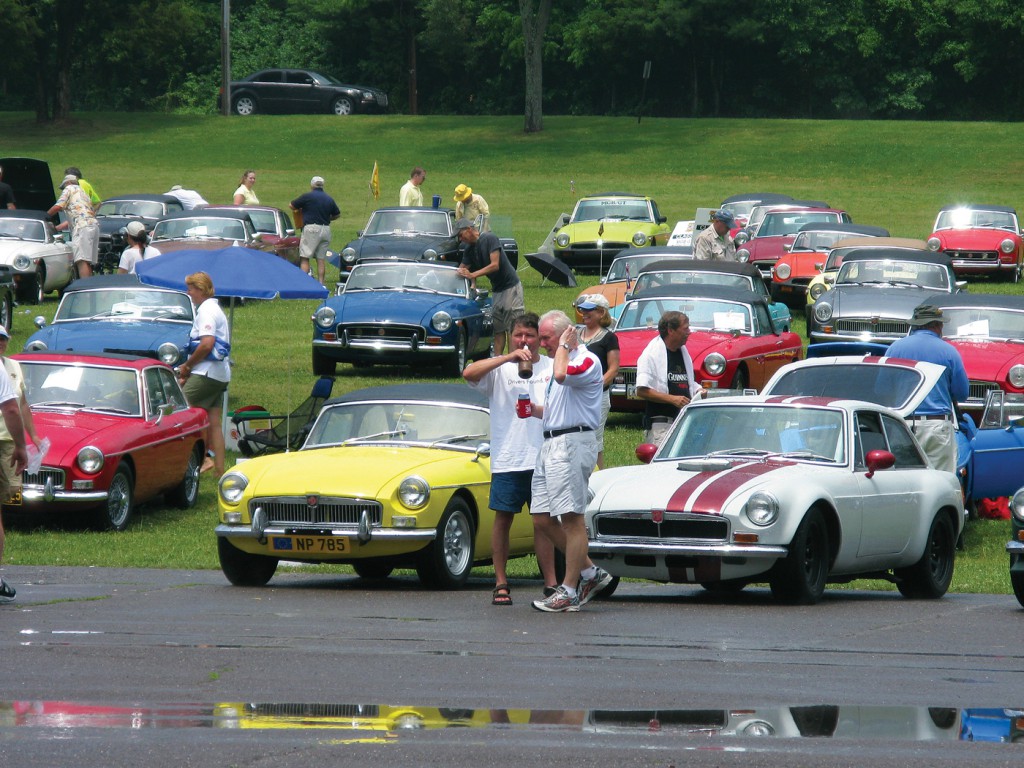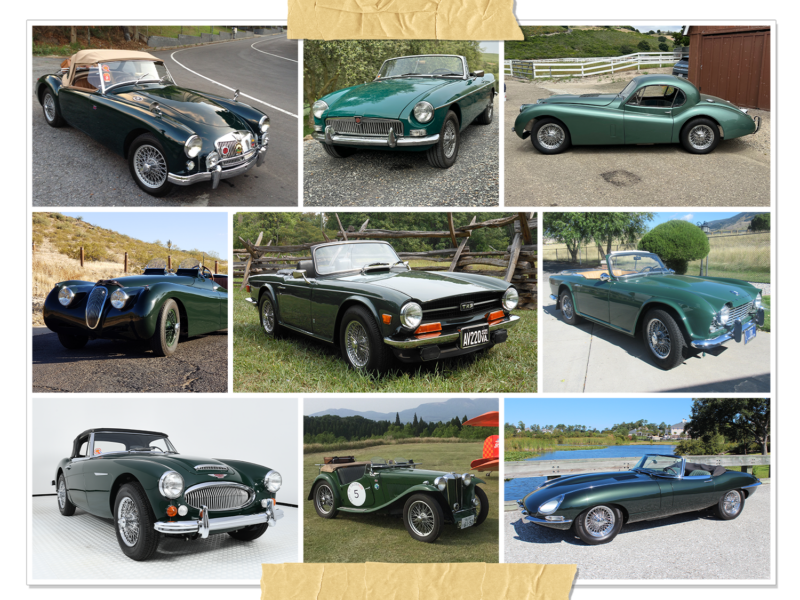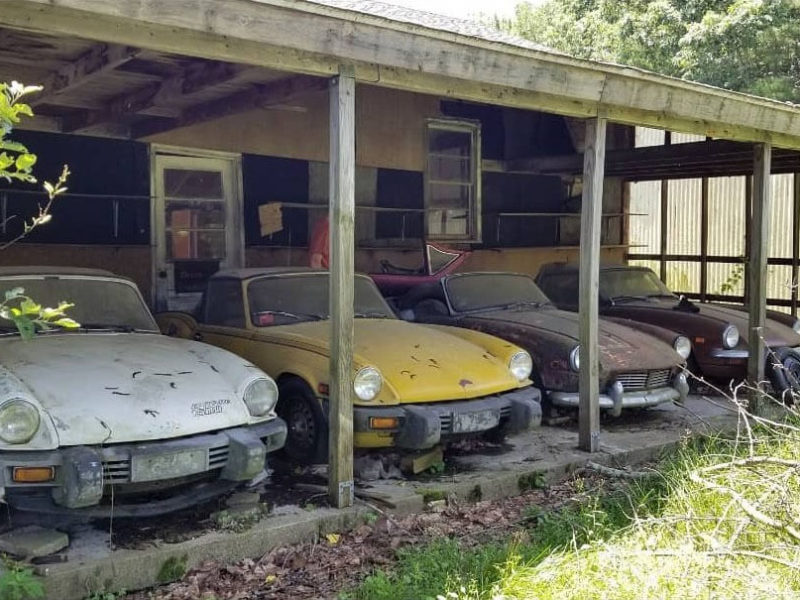Classic sports car design, endless driving enjoyment and enduring value…the iconic MGB has all of that. You can’t ask for anything more out of a sports car. And yet the MGB does deliver more: it’s affordable, uncomplicated to restore and easy to repair. Throw in the avid network of clubs and crowded calendar of events, and is it any wonder that the MGB is still one of the most popular sports cars of all time?
The glory years of this best-selling classic were between 1965, when the five-main-bearing engine and push-button door handles appeared, and mid-1974, when the car was radically modified aesthetically and mechanically with integrated black bumpers, elevated ride height and reduced carburetion.
Those nine years, representing half of the 18-year production run, saw record sales that helped make the MGB the world’s best-selling sports car. It held that title for about 20 years after production stopped and Mazda Miata sales finally overtook the MGB.
The volume of cars produced means that there are still plenty on the road and available for sale at reasonable prices. And, Moss Motors supplies every body piece, mechanical part, and upgrade component it can think up to enable owners to build the MGB of their dreams.
Introduced in 1962, the MGB saw few changes until the 1965 model year when a five-main-bearing engine with 98 bhp replaced the earlier motor, and push-button door handles replaced the pull-handles. These noticeable changes heralded the MGB’s time to shine in the automotive sun.
There were many small model changes over the next nine years, but most were an attempt to meet changing government regulations. As emission requirements got tougher, the horsepower dropped from 98 bhp in 1965 to 62 bhp in late 1974 on the rubber-bumper model.
Which One?
If you’re looking to purchase a “Golden Years” MGB, you have plenty to consider. The most sought after car is the 1967, the last of the pure MGBs according to Kelvin Dodd, Moss Motors technical expert. It’s the last year of the steel dash; still has shiny bumpers, nice grill and leather seats; and government regulations haven’t cut into performance, he explains.
The 1972, ’73 and early ’74 cars are also popular since they are the last of the chrome bumper cars, Dodd says. They have extra comforts like better seats with headrests, face level vents and a glove box, plus extra safety equipment.
Dodd knows what he’s talking about – he’s got six MGBs in his classic fleet, an obvious enthusiast. Included are a ’65 pull-handle car set up for racing; ’67 GT; ’70 roadster that is his daily driver; ’73 roadster that he’s planning to restore to stock condition; ’78 chassis that will get a Rover V8 engine; and an ’79 Limited Edition. He also has a ’69 MGC GT.
Condition and performance determine the car’s value, not originality, so go for a nice car without rust, advises Dodd. Then you can take it from there to upgrade it as much as you like with power, comfort, safety, reliability and aesthetic extras. Parts are mostly all interchangeable.
Grin-Worthy Upgrades
MGBs have a low center of gravity, tight handling and an active driving experience, so even stock they’re fun to drive. But Dodd says there are many ways to enhance the fun factor. Simple mechanical and electrical systems mean that most jobs can be done by home mechanics.
The most popular upgrade is replacing the points with an electronic ignition, says Dodd. Moss carries Pertronix, Crane and the Flamethrower distributor. Combine that with larger air filters and a tune-up, and you can add an easy five to 10 horsepower.
To boost further, go for a ported aluminum alloy cylinder head. They’re lighter, cool better and are more efficient too. Original cylinder heads have a tendency to crack due to design flaws. Regularly check the compression and adjust the valves, says Dodd.
The Moss supercharger adds up to 40 percent more power and makes the car perform as good as it looks. In fact, Dodd says the supercharger is the ultimate upgrade. “I’ve played with MGBs for many years and there has never been anything that makes such a difference to the way the car drives.”
Installing an overdrive transmission can be time consuming and difficult to find the parts, but Moss offers an alternative five-speed conversion kit that provides the benefits without the complexity. Dodd recommends sticking with the original SU carburetors. Add a Tourist Trophy polished stainless steel exhaust for looks and sound: “The two-inch large bore system lets supercharged or modified engines breathe.”
Efficient Running, Better Handling
The 1965-’67 cars had a heavy, awkward starter motor that is expensive to rebuild. A modern gear reduction unit offers a lot of benefits, says Dodd. From 1968 onwards the original starters were pretty dependable, he adds.
Dodd suggests changing the twin six volt batteries to a single gel cell. For cars not driven year round, he recommends the Westco gel cell since it’s sealed, small and lightweight. Put it in a corrosion proof battery box and install a remote mount battery shut-off switch, he adds.
Handling is enhanced with stiffer springs, polyurethane bushings, and an adjustable sway bar that gives the equivalent of a 3/4″ solid bar for street driving while still retaining comfort, or a 7/8″ solid bar for fast driving or autocrossing, Dodd explains. He adds that the original front shock setup works well.
For better braking, go with drilled and slotted rotors, improved friction materials and stainless steel flexible line kits, Dodd says.
It Comes Down to Details
For looks, Dodd recommends the leather seat kits and cloth top. The clipon cloth cockpit cover is handy to keep out the dust and leaves when the top is down, or you can go for an installed tonneau cover. The trunk originally had no trim or carpet to separate luggage from the rear wheel, so trunk carpet kits are popular.
New wheels are one of the biggest sellers at Moss. Wire wheels come in original painted or chrome finish, and there are conversion kits for cars that didn’t have them originally. The Minilite replica wheels fit perfectly and come in various price ranges.
For those who focus on the details, grilles and taillight assemblies can be interchanged; there are a variety of steering wheels; and you can spiff up a padded dash with a wood-grain insert, or replace it with the early crinkle-finish dash or later dash with glovebox. A center console and armrests are also available. For luxury, go for power windows and air conditioning.
MGB Production Changes
1965: Five-main-bearing engine; push-button door handles; crankcase carburetor breather system. Radial tires available as an option. MGB GT introduced with rear hatch.1967: Reverse lights; stronger version of the three-synchro gearbox.
1968: All-synchromesh transmission; stronger rear axle; pre-engaged starter; first emissions control devices; alternator to replace the generator; negative-ground electrical system; energy-absorbing steering column; tandem master cylinder; reflector side markers; yellow signal light covers; factory installed side mirrors; dual brake system. Optional automatic transmission. North American cars: padded dash without glove box; rocker switches; center console with space for a radio.
1969: Flush interior plastic door pulls; locking steering column; three windshield wipers instead of two. Headrests added for North America.
1970: Illuminated side markers; single lens red/amber taillights; recessed black grille with vertical vanes; steel bonnet; Rostyle wheels standard; drilled three-spoke steering wheel; evaporative loss control system; small black rubber buffers on the bumper overriders; split rear bumper. Stronger seats covered in “Ambla” vinyl.
1971: The one-piece rear bumper returns.
1972: New dashboard design on North American cars with glove box and vertical fresh air vents. Center console; new gearshift knob; black wipers. SU HIF carbs to replace HS carbs. More body colors available.
1973: Illuminated dash switches; arm rests; better wiring harness; grille with aluminum surround and black plastic honeycomb insert.
1974: Sabrina black overrider rubber assemblies on strengthened chrome bumpers. September: Rubber bumpers; elevated ride height. December: Single Zenith-Stromberg carburetor on U.S. cars. New cylinder head for leadfree gasoline. Single 12-volt battery replacing dual six-volt batteries.
by Kathleen M. Mangan









'1965-74 MGB: THE CLASSIC YEARS' have 12 comments
May 16, 2012 @ 8:40 am Jay F
Seems like a long self-promoting sales pitch to sell parts. Why you excluded the 62 -64 MGB I cant understand. The three main engines give a much better experience than the 5 main engines.
June 25, 2014 @ 4:36 pm robin
No doubt..my 64 could squirrel in 4 gears (only did it once with a TR6 owner in the car) just way more responsive out of corners ..have had 2 71’s a 73 and 72 ..none come close.
June 25, 2014 @ 4:41 pm robin
Plus I loved the true ping the toggle switches made when flipped on.
January 9, 2013 @ 12:31 am Gary
I have a 1967 MGB RD. If I change the color to a more updated one, would it lower the value of the car? I’m trying to keep it as original as I can. Also can you send me a picture of the original radiator? I don’t think I have the right one.
June 18, 2014 @ 9:39 am David Sprinkle
Do you have a video or advice on replacing rear sway end link bushings with poly bushings?
June 18, 2014 @ 9:43 am David Sprinkle
I guess I’m expecting that you know its for a 1977 MGB. Sorry!
June 27, 2015 @ 9:24 pm Ed Hargrove
Re: horsepower ratings. One factor often overlooked is that in the US in 1971 the gov’t decreed Net HP rather than Gross ratings be used by every car maker, and also that gov’t tests be run vs. the honor system. Everyone’s advertised HP dropped sharply, by roughly 15-20%, as Net requires the engine be in the car, with all accessories (water pump, alternator, engine fan, etc.) connected, stock air filter, stock exhaust, and an unaltered production line car. In other words, an honest rating on a car the customer can buy. American muscle car makers were pretty notorious for unrealistic ratings from “ringer” handbuilt engines running on test stands, to the point that “bhp” sometimes came to mean “brochure horsepower”. Manufacturers finessed the issue by blaming emission controls, which was partly true but by no means the whole story.
March 2, 2016 @ 3:58 pm Angela
why the three wipers???
May 3, 2016 @ 11:35 am Matt
As I understand it, new safety regulations in required a certain percentage of the windscreen to be serviced by a wiper. Since the windshield is so short, fitting a longer wiper wouldn’t work to meet that percentage. Solution: add a middle wiper. It’s pretty unique, and one of the first things I point out when I’m showing off my 71.
May 17, 2016 @ 12:58 pm Thomas
Funny thing about that middle wiper. The extra swept area is behind the rear view mirror, so not much joy for visibility but it did satisfy the US bureaucrats!
I understand this was a modification for the North American models that didn’t show up in the UK. Perhaps someone can confirm?
June 8, 2019 @ 1:49 am Douglas
Just purchased an Ariana tan 1972 complied MG manual with o/drive..on my drive home which was about 250ks I noticed the clutch was slipping
Not much and not all the time..now home I find it has a bad oil leak at the rear main oil seal..on inspection of the receipts that came with the car I find it has had three clutches and three rear main oil seals over the past 6 years..now I am worried I am just doing another oil seal and clutch assy that’s only going to last a short period..can anyone advise me why this is happening and is there a way of stopping this continuing.
Thank you for any help given to me in advance..
P.s. now I know why it was being sold..previous owner didn’t mention this..so it’s buyer beware!.
December 8, 2021 @ 9:11 am Jeb Boyd
Info is kinda sparse & sketchy, and the article is VERY subjective. This should have been much better. There were quite a few different iteration of the MGB, and each has its own features & foibles. The man who likes his sports car old school and traditional will like a ’64 with its spartan presentation, where someone who’s more concerned with features and comfort will enjoy an ’80 LE. There are almost a half dozen different cars in between. I’m partial to my ’72, tailored to my frame & preferences.